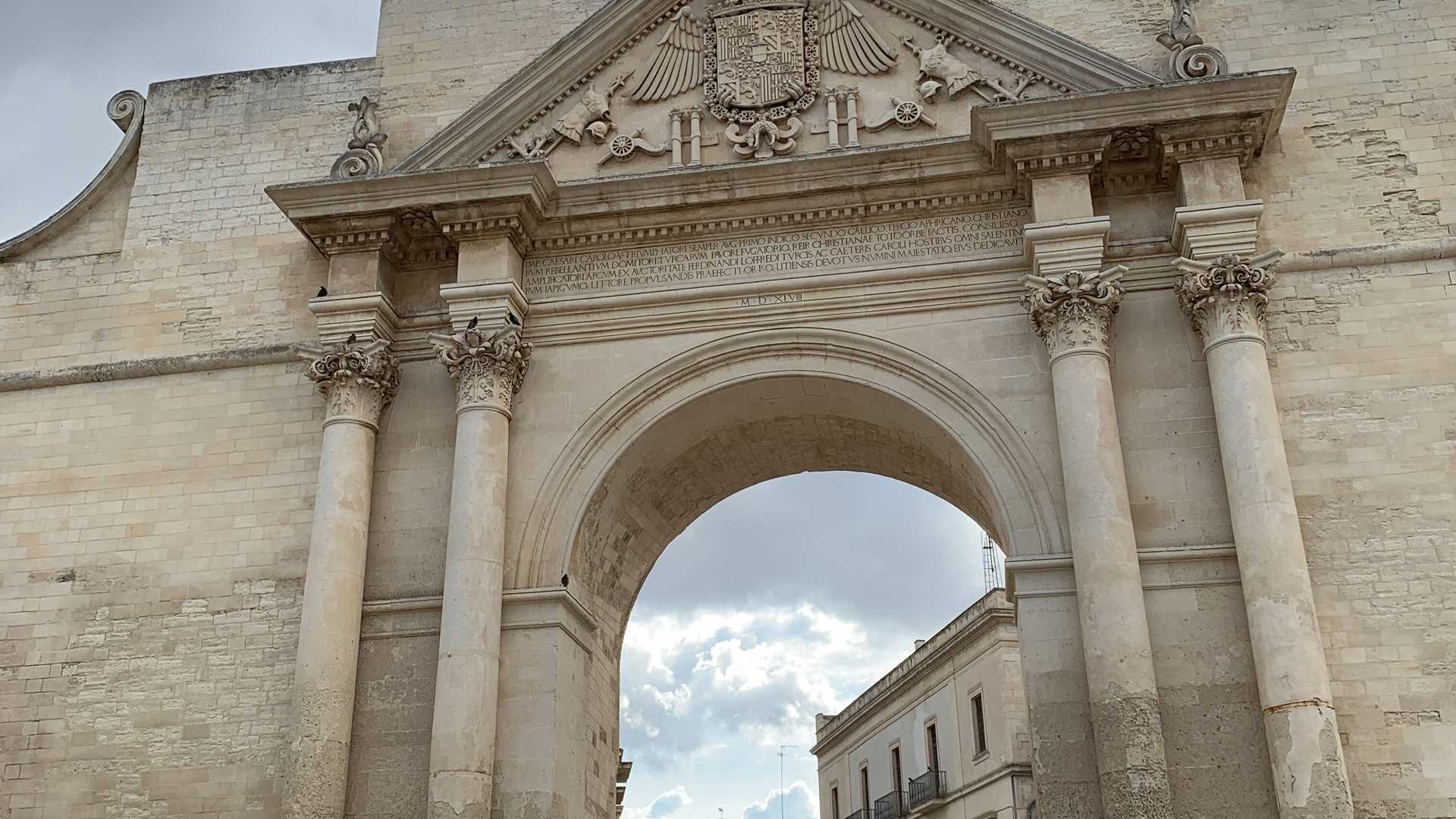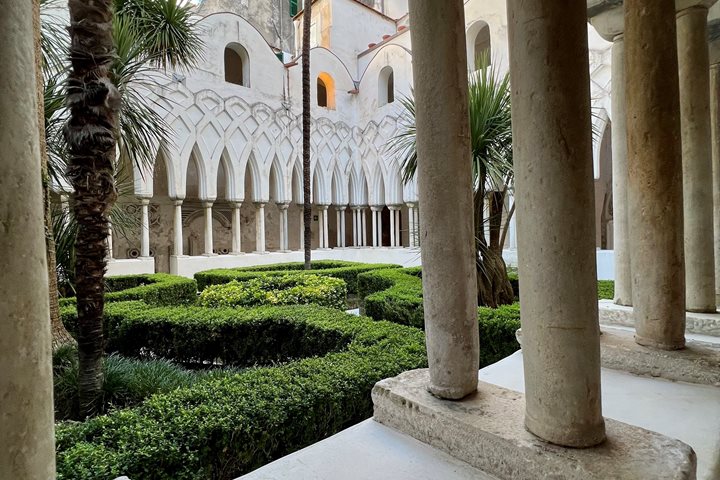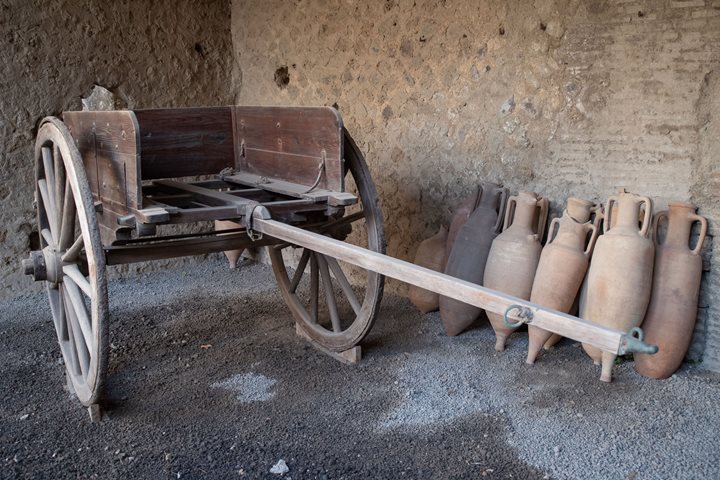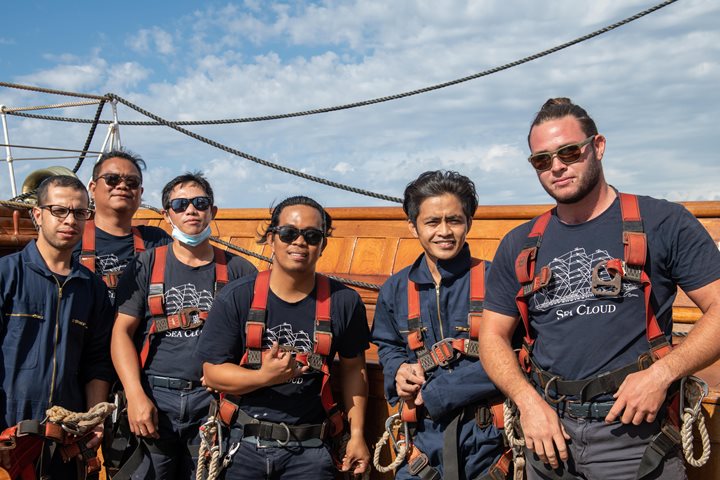It is early in the morning, and Sea Cloud drops its anchor in front of Otranto. We can see the mountains of Albania–only 70 kilometers away. We are at the heel of the boot of Italy, the doorway between the eastern and western Mediterranean worlds. This city of 5,000 inhabitants lies between the Adriatic and the Ionian Sea.
We drive for an hour to visit Lecce, northwest of Otranto. The fields are flat and fertile, covered mostly by olive trees. The symbol of this region, named Apulia by the Romans, is the olive tree. There are 60 million in the area, and 40% of the olive oil of Italy is produced here.
When we notice that some of the trees look dry, our guide, Emanuela, explains, “There is an introduced bacteria called Xylella fastidiosa that probably arrived around 2013, and passes from tree to tree by tiny pests called spittlebugs. This Xylella causes plants to die of thirst from the inside out. There is no known cure, and maybe it has infected now 40% of the region. Scientists have found two cultivars of olives resistant to the bacteria, so there is hope. But it might take up to 50 years to restore what has been lost so far.”
Emanuela also explains to us that before the 1600s, the region suffered constant invasions from the Ottomans. But in 1571, the so called “Holy League“defeated the Ottomans in the Battle of Lepanto. This was a key event after which trade could flow, and Lecce became dynamic and multicultural. Rich families of merchants came from all over Italy to prosper and build beautiful churches, transforming this city into a baroque jewel. And that is what we encounter, a precious, buoyant place of pale limestone (pietra Leccese) with figured balconies, colorful ceramics along the walls, and perfectly designed cobblestone streets.
There are two things about Lecce that I love: Café Leccese (basically coffee, almonds, and ice) and the tradition of making art with papier maché, known as “Cartapesta.“ There was no marble in the region to meet the demand for religious statues in this growing city during the 1600s and 1700s. Craftsmen used straw, rags, plaster, and a few tools to finish magnificent works that ended up looking exactly like marble. Many of the artists were barbers, because they already had some of the tools needed for the craft. The tradition continues today.
In the afternoon, we visit Otranto and its Duomo with the floor mosaic with the tree of life. We also visit the chapel with two-thirds of the skulls of the 813 martyrs from the 1480-1481 Ottoman invasion. Emanuela uses her laser pointer to explain why the elephants, the deer, and Alejandro the Macedonia are on the floor of this cathedral. If I write every detail about our experience at the heel of Italy’s boot, I will end up with a book. There is so much to learn and experience every day in the company of our fellow travelers, fantastic historians, photographers, and local guides! That’s what a day is like on Sea Cloud with Lindblad and National Geographic.







